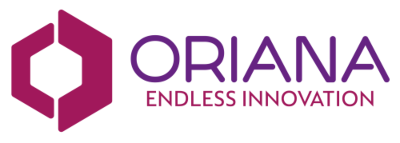Every company, big or small, relies on a wide range of physical products to keep the operations running. Yet, not all of these acquisitions make it to the forefront of their products or services.
That’s where indirect procurement steps in. But what exactly is it, and why is it important? Indirect procurement is the acquisition of goods and services that are not directly linked to a company’s core products or services. While these purchases may not take center stage, they form the backbone of a business’s operations. From cost savings to operational efficiency, indirect procurement plays a critical role in the success and competitiveness of companies.
In this blog post, we explore the relevance of indirect procurement for businesses of all shapes and sizes, as well as the key steps you and your team can take to streamline the process.
Indirect procurement has a bigger impact on your business than you think
In an ideal scenario, indirect procurement ensures the smooth operation of a company by guaranteeing that essential supplies and services are readily available when needed. But it’s often not the case.
Getting indirect procurement right is crucial for several reasons. It can account for a significant portion of a company’s expenses, impacting whether you’re optimizing costs or overspending.
Neglecting this aspect of the business can lead to a range of challenges, including not only rising costs but also inefficiencies and the potential for operational disruptions. And there’s more: in extreme cases, inefficient indirect procurement can even hinder your ability to stay in the market.
How to optimize indirect procurement processes?
Mastering indirect procurement is not just about controlling costs; it’s a strategic initiative for businesses looking to thrive and stay resilient. The following are universal tips that any organization, regardless of industry can take to increase efficiency in their indirect procurement processes.
1. Technology platform consolidation
The first step towards efficiency is streamlining the process by getting rid of distractions and focusing on what’s important. In this context, this is about eliminating the tools you don’t use and consolidating them into a single platform.
The consolidation is not just about streamlining your processes; it’s a gateway to seamless integration with essential systems you’re using, ensuring the uninterrupted flow of data across not just procurement, but the entire organization. Moreover, having all your procurement-related info in a single platform lightens the load on administrative tasks, simplifies maintenance, and lowers the risks of lost data.
But the benefits don’t stop there. A centralized solution also provides integrated reports that give you a comprehensive overview of all aspects of procurement, equipping you with the data and insights that are necessary for informed decision-making. In essence, this unified indirect procurement solution is your ticket to effective, secure, and smart processes.
2. End-to-end process planning
To be truly efficient, you need to carefully plan, standardize, and document your procurement processes. This isn’t just about checking boxes; it’s an important step to fine-tune your business operations. By making sure everyone follows specific guidelines, you can gain more control over the entire process. This doesn’t just increase transparency – it goes deeper, allowing for a meticulous approach, which provides a structured and seamless workflow where everyone can be held accountable.
Think of it like building a solid foundation for your business operations. With a well-thought-out plan and interconnected processes, you gain a clearer view of your entire process landscape, ultimately contributing to enhanced organizational efficiency.
3. Automating indirect procurement processes
When it comes to transforming processes and improving efficiency, automation plays the biggest role. Automation can take hours’ worth of time spent on tedious tasks like approvals, sourcing plans and events, managing RFxs and supplier price lists, and selecting and adding suppliers. The use of task cards, task baskets, and notifications provides a structured approach to task management, simplifying everyone’s job.
Additionally, the automated progression ensures a seamless transition between tasks, reducing the need for manual intervention and context switching. In essence, automation empowers your organization to streamline your procurement workflows, resulting in an optimized process, more transparency, and happier team members.
Low-code software for indirect procurement
Low-code solutions for indirect procurement offer a single, customizable application to streamline the entire procurement process, from planning to invoicing. Low-code software seamlessly integrates with existing tools and other applications, ensuring efficiency and data accuracy.
These platforms are versatile and accommodate both cloud and on-premise setups, making them a great choice for various organizations. Oriana’s low-code procurement management software offers features like
- Sourcing plans
- Requisition management
- Contract management
- Purchase order management
- Invoice management
and other user-configurable functions tailored to the different needs of different customers. In doing so, the solution empowers organizations to gain transparency, control over expenses, and smarter, data-driven decisions.

Indirect procurement software for increased organizational efficiency
We’ve seen how indirect procurement plays a behind-the-scenes but critical role in your business operations, representing a significant portion of a company’s expenses. Neglecting this aspect can result in rising costs, inefficiencies, and operational disruptions, potentially affecting a company’s market position. Therefore, mastering indirect procurement needs to be a strategic imperative for businesses of all sizes.
Automation is a game-changer in transforming processes and increasing efficiency, significantly reducing the time spent on tasks like approvals, sourcing plans, and supplier management. Low-code indirect procurement software has the potential to simplify and customize the entire procurement process, from planning to invoicing. This solution is versatile, accommodating various organizational setups, and empowers organizations to gain transparency and take back control over expenses.
To learn more about how to master indirect procurement, watch our on-demand webinar.



